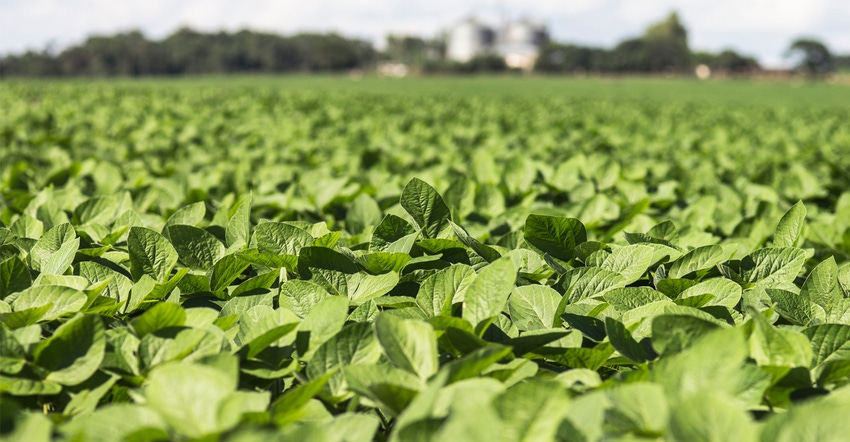August 4, 2021

South Dakota State University Extension is observing bean leaf beetles in soybean fields across the state, and shares tips to minimize effects to producers. These beetles will seek out leaf litter and cover in late fall. While these adults are in soybeans, they can cause major defoliation to the leaves. A reduction in available leaf area can lead to reduced levels of photosynthesis and result in lower yields.
Adult bean leaf beetles can vary in color from brown, yellow, orange and red. Bean leaf beetles have a black triangle located behind their thorax (segment behind black head capsule), and four black spots that are present on their hardened forewings.
Methods of scouting
Bean leaf beetles avoid disturbances, which makes them one of the more difficult insects to scout for in soybeans. Scouting and identifying bean leaf beetles can be especially difficult in soybeans that have canopied. The best method for scouting is to use a sweep net and collect 20 pendulum swings from four locations within the field. The economic threshold for bean leaf beetles is 70 to 100 beetles per 20 sweeps. This is based on bean leaf beetle populations later in the season.
An alternative to directly scouting for populations of bean leaf beetles is to determine the amount of defoliation occurring within the field. During this time of the season, this method is often more effective than individual insect counts, because there can be multiple species of defoliators active in soybean.

To scout for defoliation, examine 10 plants from five locations spread throughout the field (50 plants per field). For each of the plants, estimate the percentage of leaf area that is removed from all the leaves. Record this for each of the examined plants and calculate the field average. Since the majority of soybeans are past the initial flowering stage, the economic threshold for defoliation is 20%. At or above this level of defoliation, a 3% to 7% yield loss may occur.
Manage with insecticide
If defoliation percentage or bean leaf beetle counts are above the threshold, an application of foliar insecticides is warranted to reduce the bean leaf beetle population and possibly other defoliating insect populations.
Refer to the most recent South Dakota Pest Management Guide: Soybean for a list of labeled products.
Add virus to list
If you are finding bean leaf beetles in the field, you will also need to scout for bean pod mottle virus, which is primarily vectored in the United States by the bean leaf beetle. When bean leaf beetles feed on BPMV-infected soybean plants, they also ingest the virus and become a carrier. The virus can be obtained with a single bite of an infected plant. Virus transmission occurs rapidly with the next feeding. As the beetle moves throughout the field, it spreads the virus to the healthy plants.
BPMV symptoms are commonly confused with herbicide injury and can resemble symptoms of other viruses. Symptoms associated with BPMV include:
mild-to-severe chlorotic mottling on leaves
distortion or wrinkling of foliage
stunting and delayed maturity
Symptom severity may lessen during hot weather or with maturity; however, the plant still remains infected with the virus.
One effect of delayed maturity is the green stem disorder. This is where the stem remains green after the soybean pods have matured. Infection by BPMV decreases pod formation and reduces seed size, weight and number.
Seed coat mottling — the discoloration of the seed due to a black or brown pigmentation bleeding from the hilum — is another symptom caused by this virus. Grain with discolored seeds may be docked at the time of sale. BPMV is also associated with increases in seed infection by Phomopsis spp.
Source: South Dakota State University Extension, which is responsible for the information provided and is wholly owned by the source. Informa Business Media and its subsidiaries aren't responsible for any of the content contained in this information asset.
You May Also Like




